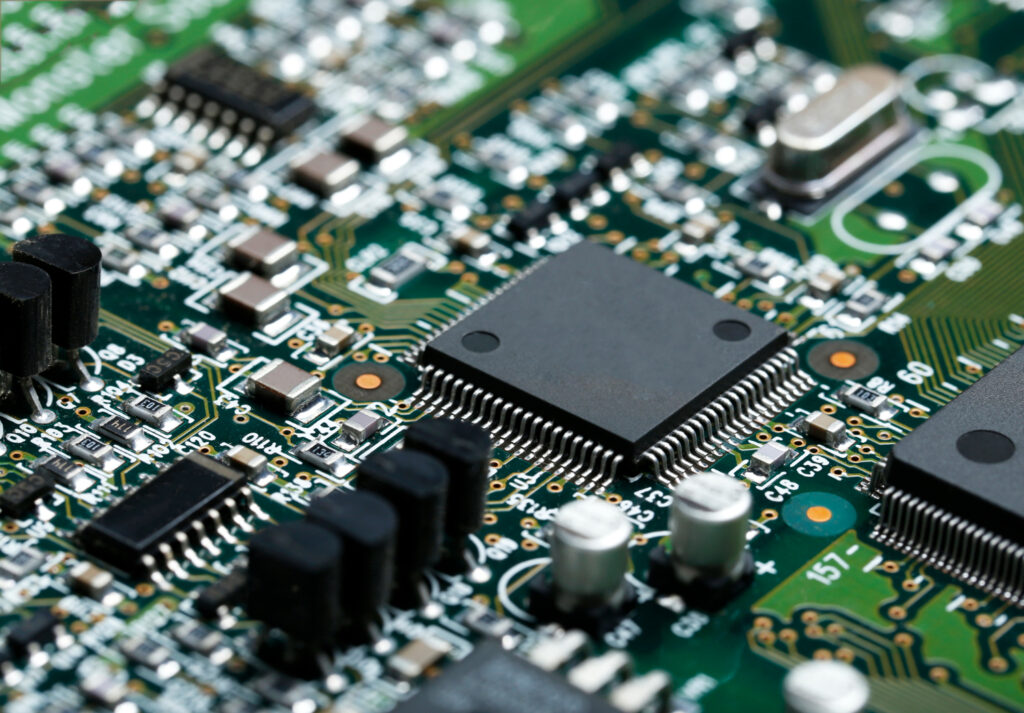Introduction
In today’s interconnected world, the concept of intelligence and connectivity forms the backbone of modern technology. At the core of countless devices are embedded systems, specialized computing units designed to control and manage specific functions. From smart appliances and wearable health monitors to industrial robots and automotive electronics, embedded systems have become indispensable in our daily lives.
However, intelligence alone is not enough. The real potential of embedded systems is unlocked when they can communicate seamlessly with other devices, cloud platforms, or enterprise applications. This is where IoT SIM cards come into play. By providing reliable, secure, and scalable connectivity, IoT SIM cards transform standalone embedded systems into integral components of the Internet of Things (IoT) ecosystem.
This article explores the journey “from chips to connectivity”, illustrating the crucial role of IoT SIM cards in embedded systems. We will discuss embedded system fundamentals, the significance of connectivity, IoT SIM types and functionalities, real-world applications, challenges, and future trends. Finally, we highlight how Zhongyi IoT offers robust IoT SIM card solutions to empower businesses worldwide.
Understanding Embedded Systems
Definition and Core Components
An embedded system is a computing device designed for dedicated functions within a larger mechanical or electronic system. Unlike general-purpose computers, embedded systems are optimized for specific tasks with stringent constraints on performance, energy consumption, and size. Typically, an embedded system comprises:
- Hardware: Microcontrollers, processors, memory, sensors, actuators, and communication modules.
- Software: Real-Time Operating Systems (RTOS), firmware, control algorithms, and application-specific programs.
- Interfaces: Input interfaces (sensors, buttons) and output interfaces (displays, actuators, network modules).
Key Characteristics
- Specialization: Embedded systems are tailored for a particular function, such as controlling a vehicle’s braking system or a smart thermostat.
- Real-Time Operation: Many embedded systems operate in real-time, requiring instant processing and response to sensor inputs.
- Low Power Consumption: Optimized for energy efficiency, crucial for battery-powered IoT devices.
- Compact Size: Embedded hardware is small and often hidden within larger devices.
- Reliability: Must function continuously under diverse and sometimes harsh conditions.
Applications of Embedded Systems
Embedded systems power a wide array of devices across industries:
- Automotive: Engine control units (ECUs), advanced driver-assistance systems (ADAS), telematics.
- Healthcare: Wearable monitors, medical imaging equipment, remote patient monitoring.
- Industrial Automation: Robotics, production line control, predictive maintenance sensors.
- Smart Home Devices: Thermostats, lighting, security systems.
- Smart Cities: Traffic management, environmental monitoring, utility meters.
In essence, embedded systems are the brains of modern smart devices. But without connectivity, these “brains” remain isolated and cannot fully contribute to intelligent decision-making.
The Importance of Connectivity in Embedded Systems
Connectivity transforms isolated embedded systems into powerful, networked devices. The integration of IoT SIM cards enables secure, reliable communication between devices and the cloud, empowering real-time monitoring, control, and analytics.
Why Connectivity Matters
- Data Transmission: IoT devices generate valuable data. Connectivity ensures that sensor data is transmitted to centralized platforms for processing.
- Remote Management: Firmware updates, troubleshooting, and configuration adjustments can be performed over the air.
- Automation: Connected embedded systems can trigger actions autonomously, interacting with other devices and systems.
- Scalability: Enterprises can deploy and manage thousands of devices across different geographic locations with consistent connectivity.
Connectivity Options for Embedded Systems
- Wired Connectivity: Ethernet, USB, or CAN bus – reliable but limited in mobility.
- Wireless Short-Range: Wi-Fi, Bluetooth, Zigbee – suitable for local area connections but lacks broad coverage.
- Cellular Networks: 2G, 3G, 4G, LTE-M, NB-IoT, 5G – ideal for IoT devices requiring wide-area, reliable connectivity.
Cellular connectivity, enabled by IoT SIM cards, offers unmatched advantages in flexibility, coverage, and manageability, making it the preferred choice for modern IoT deployments.
What Are IoT SIM Cards?
An IoT SIM card is specifically designed to connect IoT devices, including embedded systems, to cellular networks. While physically similar to consumer SIM cards, IoT SIM cards are engineered for enterprise-level durability, longevity, and network management capabilities.
Features of IoT SIM Cards
- Durability: Resistant to extreme temperatures, humidity, and vibrations, ideal for industrial or outdoor deployments.
- Long Lifespan: Designed to operate over 5–10+ years, matching the lifecycle of embedded devices.
- Global Multi-Network Access: Capable of connecting to multiple carriers for continuous coverage worldwide.
- Remote Management: Enterprises can monitor usage, provision SIMs, and control data plans remotely.
- Enhanced Security: Supports private APNs, VPNs, and encrypted data transfer.
Types of IoT SIM Cards
- Standard SIMs (2FF/3FF/4FF): Removable cards for general embedded devices.
- MFF2 SIMs: Soldered directly onto device boards for ruggedness.
- eSIM (Embedded SIM): Programmable over the air, flexible and future-proof.
- iSIM (Integrated SIM): Integrated into the processor, minimizing hardware footprint.
IoT SIM cards allow embedded systems to communicate across cellular networks, acting as the bridge between device intelligence and cloud-based applications.
Integrating IoT SIM Cards with Embedded Systems
The integration of IoT SIM cards into embedded devices is a key step in enabling global connectivity.
Methods of Integration
- Physical SIM Slot: Devices with SIM trays accept removable IoT SIM cards.
- Soldered MFF2 SIM: Provides permanent, robust connectivity for industrial devices.
- eSIM/iSIM Modules: Future-proof solutions allowing remote provisioning and management.
Connectivity Workflow
- Sensors in the embedded system collect operational or environmental data.
- The IoT SIM card authenticates the device on cellular networks.
- Data is transmitted securely to cloud platforms or enterprise servers.
- Analytics engines process the data, generating actionable insights.
- Commands, firmware updates, or alerts are sent back to the device.
Practical Use Cases
- Smart Meters: IoT SIMs transmit electricity, water, or gas consumption data to utility providers.
- Connected Vehicles: Embedded telematics units send diagnostics and GPS data.
- Security Cameras: Cameras transmit live feeds to monitoring centers or cloud storage.
- Healthcare Wearables: Devices send real-time patient vitals to healthcare providers.
IoT SIM cards enable embedded systems to function as intelligent, networked nodes, creating a truly connected ecosystem.
Benefits of IoT SIM Cards in Embedded Systems
- Global Connectivity: One SIM solution works across multiple countries and carriers.
- Redundancy and Reliability: Multi-network SIMs ensure devices remain connected even if one network fails.
- Enhanced Security: Support for private APNs, encrypted tunnels, and secure authentication.
- Remote Management: Centralized dashboards allow for bulk provisioning, monitoring, and troubleshooting.
- Cost-Effective: Flexible IoT-specific data plans reduce operational expenses.
- Scalable: Manage thousands of devices across various geographies without manual intervention.
By leveraging IoT SIM cards, businesses can scale their embedded systems deployments globally with confidence.
Real-World Applications
Automotive & Fleet Management
Connected cars rely on embedded systems for telematics, diagnostics, and fleet tracking. IoT SIM cards enable real-time vehicle monitoring, predictive maintenance, and route optimization.
Healthcare & Remote Monitoring
Wearable devices, hospital monitors, and home healthcare equipment use embedded systems with IoT SIM cards to transmit vital health information securely, improving patient outcomes and enabling telemedicine.
Smart Cities & Utilities
Embedded sensors in smart city infrastructures, like traffic management systems, street lighting, and utility meters, rely on IoT SIM cards for continuous data flow, enabling efficient city management.
Industrial IoT & Manufacturing
Factories deploy sensors and robotic systems with embedded connectivity for predictive maintenance, operational efficiency, and reduced downtime.
Agriculture
Smart agriculture devices, such as soil moisture sensors and livestock trackers, transmit data via IoT SIM cards to optimize irrigation, monitor animal health, and increase crop yield.
Challenges and Considerations
Despite the advantages, integrating IoT SIM cards into embedded systems presents challenges:
- Security Concerns: Devices must be protected from cyber threats. Encrypted communication and private APNs are essential.
- Power Constraints: Cellular modules must be optimized to minimize battery drain.
- Device Lifecycle Management: SIM cards must last as long as the devices, avoiding early replacement.
- Roaming Costs: Multi-country deployments require intelligent SIM management to avoid high fees.
- Network Coverage: Choosing providers with strong global networks is critical for uninterrupted service.
The Future of Embedded Systems and IoT SIM Cards
5G and Edge Computing
The adoption of 5G technology enables ultra-low latency, high bandwidth, and massive device connectivity, making IoT SIM cards even more critical. Coupled with edge computing, embedded devices can process data locally, reducing reliance on cloud servers.
eSIM and iSIM
The transition to eSIM and iSIM modules reduces physical hardware dependencies and simplifies global deployment. Devices can be re-provisioned remotely, enhancing flexibility and scalability.
AIoT: AI + IoT
Artificial Intelligence combined with IoT allows embedded systems to become smarter and predictive. IoT SIM cards facilitate seamless data transmission, enabling real-time decision-making and advanced analytics.
Why Choose Zhongyi IoT SIM Card Solutions?
At Zhongyi IoT, we provide reliable, secure, and globally connected IoT SIM card solutions tailored for embedded systems across industries. Our services ensure that businesses can deploy and manage IoT devices with confidence.
Our Advantages
- Global Multi-Network Coverage: Automatic network switching to maintain connectivity anywhere.
- Flexible Pricing Plans: Cost-effective data packages designed for IoT applications.
- High Reliability: Carrier-grade infrastructure guarantees stable connections.
- Custom Solutions: Tailored services for industries such as automotive, smart cities, healthcare, and industrial IoT.
- Professional Support: End-to-end technical guidance and consultation.
Typical Applications
- Smart camera connectivity for security systems
- Fleet management telematics
- Smart meter solutions for utilities
- Agriculture IoT sensors for data-driven farming
Partnering with Zhongyi IoT enables businesses to reduce costs, increase reliability, and accelerate IoT deployments, ensuring their embedded systems are always connected, secure, and scalable.
Conclusion
Embedded systems form the foundation of modern smart devices, and IoT SIM cards act as the bridge to global connectivity. Together, they enable industries to innovate, optimize, and grow in a connected world.
As the IoT ecosystem evolves with 5G, eSIM, and AIoT, businesses must choose trusted partners to ensure their embedded systems remain connected, secure, and operational. Zhongyi IoT provides comprehensive IoT SIM solutions, supporting global deployments and empowering enterprises to fully leverage the potential of connected embedded systems.
Whether you are deploying hundreds or hundreds of thousands of devices, Zhongyi IoT SIM card solutions offer reliability, scalability, and cost-effectiveness, ensuring your embedded systems can communicate seamlessly across the globe.



